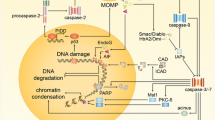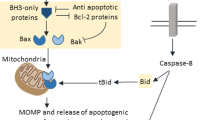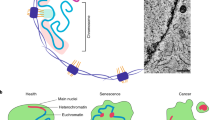Abstract
Apoptosis is a form of active cell death, genetically encoded, that plays a key role during several physiological and pathological conditions. During the apoptotic process, striking morphological and biochemical changes take place in the cell nucleus. However, the molecular mechanisms underlying these changes have escaped clarification for many years. Recently, attention has been devoted to identifying the modifications that occur during apoptosis in the nuclear matrix, a mainly proteinaceous framework structure which is thought to play a fundamental role in organizing nuclear structure and function. In this review, we focus our attention on the biochemical and morphological changes detected in the nuclear matrix during the apoptotic process. Particular emphasis will be placed on the proteolysis that some nuclear matrix proteins undergo early during the apoptotic process, as well as on the detachment of DNA loops from the matrix by the action of endonuclease(s). Future research in this field may provide important information about the principal mechanisms that cause nuclear destruction in apoptotic cells.
Similar content being viewed by others
Author information
Authors and Affiliations
Additional information
Accepted: 18 February 1997
Rights and permissions
About this article
Cite this article
Martelli, A., Bareggi, R., Bortul, R. et al. The nuclear matrix and apoptosis. Histochemistry 108, 1–10 (1997). https://doi.org/10.1007/s004180050140
Issue Date:
DOI: https://doi.org/10.1007/s004180050140




